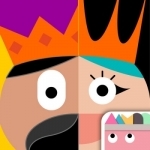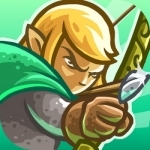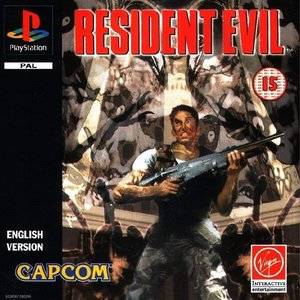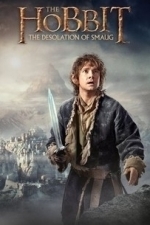Darren (1599 KP) rated The Hole in the Ground (2019) in Movies
Dec 1, 2019
Story: The Hole in the Ground starts as Sarah (Kerslake) and her son Chris (Markey) are getting used to their new home in the Irish countryside, they learn they have a disturbed neighbour Noreen Brady (Outinen) and a giant hole in the middle of a woodland area surrounding the house.
After losing her son in the woods one night, Sarah is trying to be more protective, but the disturbed neighbour Noreen, doesn’t believe that is her son anymore, similar to what she experienced herself, years before.
Thoughts on The Hole in the Ground
Characters – Sarah is the single mother who has moved away from her previous life, which does have hints of abuse, she has started a simpler life in a small village with her son and soon starts to learn about something strange that has happened to her son, with her needing to figure out the truth before it is too late. Chris is the son who isn’t happy trying to make new friends, he is terrified of spiders and after he goes missing one night, when he returns something has changed in him. Noreen Brady went through a similar experience to Sarah, which has seen her branded crazy by the locals, she can sense more being wrong, though it has haunted her whole life.
Performances – Seana Kerslake in the leading role adds so much to this film, her performance shows the pain her character has been through, despite showing the strength she is carrying on with. James Quinn Markey is great for a young actor, showing the innocent side to his character and the change he has been through. The supporting cast don’t get many scenes but do a good job when called up.
Story – The story here follows a single mother who starts to see a strange change in her son and must decide what has caused this and what she is going to do about it. The story does dive into one of the most famous horror myths, which is clear to see early on, though never directly uses the name, we won’t say just to stop any spoilers. We have the themes of an abuse victim trying to rebuild their own life, while remaining strong for her child. We only focus on the two characters, with any others only offer hints to what is happening. What the story offers, would be the slowly building moments that Sarah is going through, where she is torn about the truth, we focus on dread feeling over any shock value.
Horror – The horror in this film does give us a clear look at dread and gloom, instead of playing of the jump scares, it so easily could have turned too.
Settings – The film takes us to a small Irish countryside village, the house is outside the village surrounded by woodland, which only adds to the unknown coming from inside the woods.
Special Effects – The effects being used in the film are kept to a minimum, which does help when we need to see them happening.
Scene of the Movie – What is Chris up to.
That Moment That Annoyed Me – We only get the hints of the former life they lived.
Final Thoughts – This is a dread filled horror that will keep us wondering what is happening, with strong performances from the lead actors.
Overall: Dread Filled Horror.

Thinkrolls: Kings & Queens
Education and Games
App
Thinkrolls Kings & Queens is an epic adventure of logic, physics and fun! Practice reasoning, memory...

Kingdom Rush Origins HD
Games and Entertainment
App
***Best Mobile Game 2015 DICE Nominee*** The most addicting tower defense game returns in an...

Kingdom Rush Origins
Games and Entertainment
App
***Best Mobile Game 2015 DICE Nominee*** The most addicting tower defense game returns in an...

Anya Dress Up & Pet Puppies
Games and Entertainment
App
The cutest little doll, Anya is a little girl who loves to play and care for her puppies. --...
Matthew Krueger (10051 KP) rated the PlayStation version of Resident Evil in Video Games
Jun 27, 2020 (Updated Jun 27, 2020)
The plot: Chris Redfield and Jill Valentine, are members of an elite task force known as S.T.A.R.S., as they investigate the outskirts of Raccoon City following the disappearance of their team members. They soon become trapped in a mansion infested with zombies and other monsters. The player, having selected to play as Chris or Jill at the start of the game, must explore the mansion to uncover its secrets.
Gameplay: The player's character is a member of a special law enforcement task force who is trapped in a mansion populated by dangerous mutated creatures. The objective of the game is to uncover the mystery of the mansion and ultimately escape alive.
To fulfill the game's objective, the player uncovers various documents that provide exposition about the game's narrative, as well as clues that help them solve various puzzles within the mansion. Key items are also available that give the player access to other items or new areas. The player can arm their character with weapons to defend themselves from enemies, although the ammunition available for each firearm is limited and the player must learn to conserve the ammunition they have for situations where they will really need it
The carrying capacity of the player is limited depending on the character and items that the player does not wish to carry at the moment can be stored into an item box to be retrieved for later use. To save their progress, the player must pick up an ink ribbon and use it on any of the typewriters scattered through key locations in the game. However, the supply of ink ribbons the player can acquire is limited much like the player's ammo and healing supplies. Players will encounter and fight various infected creatures as flesh-eating zombies, undead dogs, giant spiders, and other monsters.
Resident Evil was very well received critically and commercially, and is often credited for defining the survival horror genre. Beyond video games, Resident Evil has been credited with re-popularising zombies in mainstream popular culture from the late 1990s onwards (along with The House of the Dead), leading to a renewed interest in zombie films during the 2000s. Resident Evil has since been hailed as one of the most influential and greatest video games of all time. Its success has spawned a multimedia franchise including video games, films, comics, novels, and other merchandise. The game has received dedicated ports to the Sega Saturn, Windows, and Nintendo DS. In 2002, a remake of the same name was released for the GameCube featuring updated graphics, sound, and changes to the gameplay and story. A high-definition remaster of the GameCube game was released in 2015 for modern platforms.
Resident Evil- is one of my favorite survivor horror games of all time and one of my favorite games of all times. Its intense, thrilling, suspenseful and overall scary. Resident Evil is a must to play, if you haven't already. Will you survivie the manison or not!

Overcome Phobias by Glenn Harrold: Clinical Hypnotherapy for All Phobias
Health & Fitness
App
Glenn Harrold has drawn upon his 20-year experience as a clinical hypnotherapist to produce the two...

Farm Charm
Games and Entertainment
App
Farm Charm is a charming accumulative match-3 puzzler with lots of fascinating levels! Discover...
Gareth von Kallenbach (980 KP) rated The Hobbit: The Desolation of Smaug (2013) in Movies
Jun 19, 2019
The journey is long and filled with peril as everything from Orcs to giant spiders stand in the way and should the group be successful in reaching their destination, there is the little matter of a giant and very nasty dragon named Smaug to contend with.
Undaunted the group press on despite finding danger a constant companion and once again give us a series staples of endless shots of them walking and walking in locales lifted from the Tourism New Zealand film room in between the amazing visual work that makes up the battle sequence and other-worldly visuals of the film.
Bilbo (Martin Freeman), is becoming more and more under the spell of the ring he obtained in the previous film and Gandalf (Sir Ian McKellen), suspects that darker forces are growing and sets off to confirm his suspicions. This divides the film into two quest centric storylines that are sure to cause some division amongst fans of the series.
The film does manage to hold your attention throughout its 2.5 hr plus run time and does have a very enjoyable finale act as the arrival of Smug (Benedict Cumberbatch), for me has been honestly the most enjoyable of any of the four prior films in the series to date. His interactions with Bilbo and the group flesh him out to be more than a creation of CGI, but rather infuse him with a evil and complexity that make him a very compelling and dynamic character.
Despite the strong cast and amazing visual FX in the film that is captured very well by the 3D filming Jackson used, the movie does have it’s share of frustrations.
Jackson has once again loaded the film with tons of characters, scenarios, and padding that easily make up more than half of the film. The idea seems to be to show a greater connection to the original LOTR films and the inclusion of Orlando Bloom as Legolas and Evangeline Lilly as Tauriel is bound to cause controversy. On one hand it was great to see the two characters and the great amounts of action they brought to the film, but the entire time I kept thinking that there was no need for most of this extra stuff as it was included simply to stretch out the film in order to justify a third movie and ensure another big box office.
When the film reaches it’s conclusion it was very clear to me that they could have completed the film in two films had the removed all of the padding and fluff and stuck to the source material. Segments are drawn out or included that really do not need to be there no matter how exciting and visually appealing they may be.
When the film was first announced it was planned to be two films but was later expanded to three when Jackson took over as Director following the departure of Guillermo del Toro. If one film was sufficient to capture each book in the original series than three films for this one book is simply overkill to me and it undermines the source material.
That being said, I did enjoy the film as it works best for me if I look at it as “inspired by’ rather than a cinematic translation of the book and in doing so I was able to get caught up in the action of the film and the character’s.
In the end the film is a true delight filled with plenty of action and adventure and will keep fans old and new entertained as despite the issues I had with it, it was one of the better action/fantasy films of the year and is a great technological achievement.
http://sknr.net/2013/12/13/the-hobbit-the-desolation-of-smaug/
Lucy Buglass (45 KP) rated The Girl in the Spider's Web (2018) in Movies
Jun 20, 2019
The biggest insult to this film is its trailer. It gives away EVERYTHING so if you’ve seen the trailer, you’ve basically seen the entire film condensed down into a few minutes. All the best scenes and key moments have been awkwardly crammed into its promotion, to the point where I was able to predict exactly what was going to happen. I felt very let down by this and it seriously ruined my ability to enjoy the film properly. It deserved a much more ambiguous trailer, letting the mystery be revealed throughout the full narrative instead.
The film is redeemed somewhat by the performances. Claire Foy is a fantastic Lisbeth Salander, putting her all into this performance and fully embodying the badass, bisexual cyber-hacker that we all know and love. She is slick, smart and sexually charged, and is a worthy successor to both Noomi Rapace and Rooney Mara. If anything, Foy deserved a better film because this story really didn’t do her much justice and that’s not her fault.
It was also interesting to see British comedian Stephen Merchant in a much more serious role, proving that he is able to step out of his comfort zone. His character, Frans Balder, is a complex one despite his lack of screen time, and I was convinced by his take on the character. Despite his relatively small role, I found him more interesting than some of the main characters.
Security expert Edwin Needham is utterly forgettable, and his character wasn’t strong enough to get much interest from me. In a similar vein, Millenium journalist Mikael Blomkvist barely even made an appearance and considering he’s been a key character in the novels and in Lisbeth’s life, this was disappointing for me. I haven’t read the novel yet so I’m unsure if this is true to the original story, but it was a shame he didn’t feature more.
Because this film focuses primarily on Salander and twin sister, Camilla, I was relieved that I at least enjoyed scenes featuring the two of them. Sylvia Hoeks is a terrifying and powerful on-screen presence, from her mannerisms to her costume design. The fractured relationship between the two sisters is fascinating and runs deep, but seems to be glossed over at times. Foy and Hoeks did their best with the script they had, but I still found the narrative jumbled and rushed in places, favouring drawn-out action over scenes with any real substance.
Sure, the action sequences are well-shot and full of adrenaline but when they replace actual narrative coherence, we have a problem. There’s too much going on, there’s plot holes, and filler scenes that really didn’t need to be there. I know two hours isn’t really a lot of screen time to play with, but it could’ve been so much better than this.
The Girl In The Spider’s Web is nothing like the complex thriller I was expecting it to be, cramming far too much into its runtime and leaving me feeling dissatisfied. It’s entertaining in its own way and if you’re mainly looking looking for chase sequences, fast cars and action, then you’ll probably have a good time. There are some great scenes and lines of dialogue, but not enough to fully redeem itself. I don’t necessarily regret watching it, but I won’t be watching again. It’s a forgettable action film.
If you want to see Lisbeth Salander and co. at their best, catch the Swedish films instead.
https://lucygoestohollywood.com/2018/11/28/disappointingly-average-a-review-of-the-girl-in-the-spiders-web/



